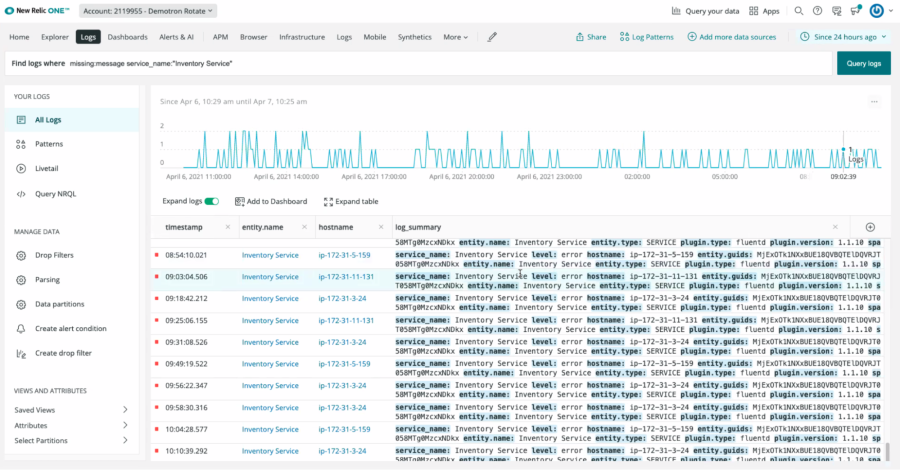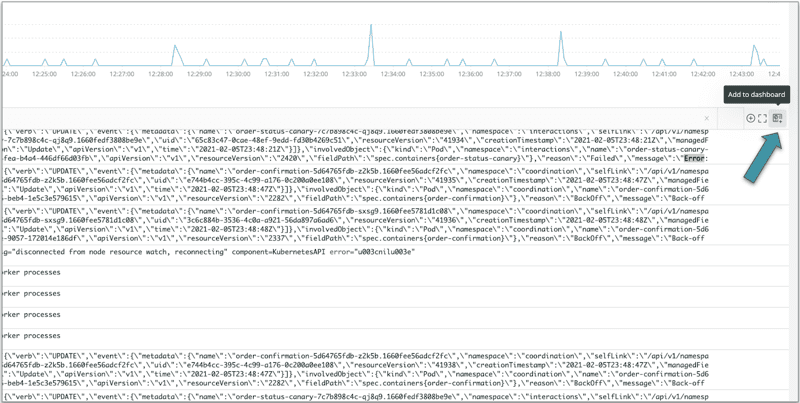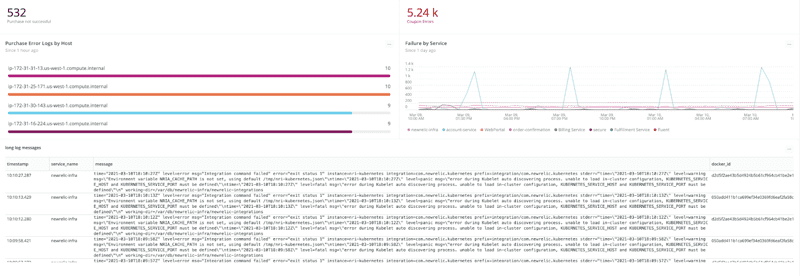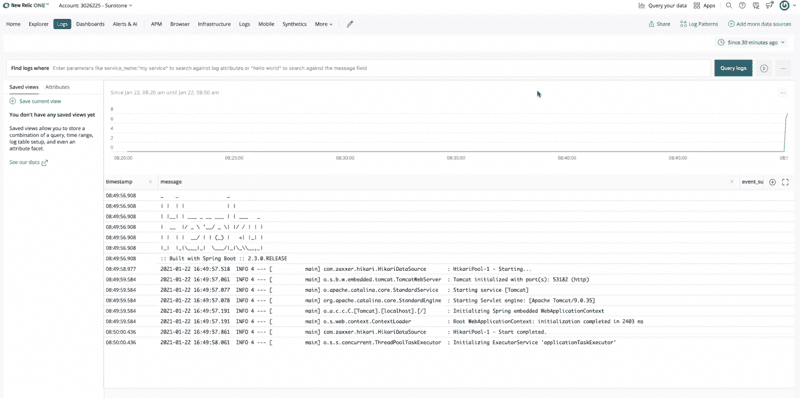Get weekly updates about the latest features and releases from the people who built them. Join the Nerdlog discussion every Thursday at 12 p.m. PT on Twitch or follow along in What's New.
If you're not a New Relic customer, sign up for your free account today.
Logs are one of the four fundamental components of observability (along with metrics, events, and traces) and include the most detail about your application’s function. In this week’s episode, Senior Manager, Product Management Michael Neville-O’Neill, and Software Engineer Josep Subirats joined the Nerdlog to discuss how they are working to make it easier to send logs to New Relic One.
A better, faster Logs UI
New Relic’s log features are now presented more clearly within the UI, making it easier than ever before to find functions like parsing and drop filters right in the left hand toolbars.
We’ve added a new log summary view, which tries to pick the most salient key-value pairs from your logs, making it easier to scan through multiple log lines quickly.
We also leveraged a new custom visualization feature to create an easy way for you to combine log messages, regardless of their pattern or length, with the rest of your telemetry data already living in New Relic One via dashboards.

Using this new feature, your long log messages (with lots of attributes) can wrap, and you can resize the columns quickly. Just click on the icon in the top right corner of the log messages panel to use this feature.


Integration with Heroku for logs
New Relic logs now integrate with Heroku via a “logs drain” that allows you to view syslog entries within New Relic One.
This capability opens up the option for you to see business logic like items sold or most active users, as a custom New Relic dashboard, based solely on logs information.
To get started, follow the instructions below:
- Download and install the Heroku CLI.
- Create a syslog drain that will send logs to New Relic and attach it to your app: heroku drains:add syslog+tls://newrelic.syslog.nr-data.net:6515 -a YOUR_APP_NAME
- Run the following to retrieve the drain token assigned to the drain created in Step 2: $ heroku drains -a YOUR_APP_NAME --json
- Copy the value from the "token" attribute returned by the command above:
{
"addon": null,
"created_at": "2018-12-04T00:59:46Z",
"id": "906262a4-e151-45d2-b35a-a2dc0ea9e688",
"token": "[your token goes here]",
"updated_at": "2018-12-04T00:59:47Z",
"url": "syslog://logs.example.com"
}
- Launch New Relic Logs and click Add more data sources.
- Click on the Heroku tile, add your drain token, and select an Insights insert API key to map it to.
- Click Add Heroku drain log, and logs will begin flowing to your New Relic One account within seconds.

Next steps
For more information about the Heroku Cloud integration for logs and how to view your logs that are streaming, you can head to What’s New or review our docs.
Subscribe to our Nerdlog emails to get weekly updates about the latest features and releases, or read up on our Nerdlog posts like our episode 2 recap or New Relic vector integration. Join the Nerdlog discussion live every Thursday at 12 p.m. PT (8 p.m. UTC) on Twitch or follow along in What’s New.
If you're not a New Relic customer, sign up for your free account today.
The views expressed on this blog are those of the author and do not necessarily reflect the views of New Relic. Any solutions offered by the author are environment-specific and not part of the commercial solutions or support offered by New Relic. Please join us exclusively at the Explorers Hub (discuss.newrelic.com) for questions and support related to this blog post. This blog may contain links to content on third-party sites. By providing such links, New Relic does not adopt, guarantee, approve or endorse the information, views or products available on such sites.



